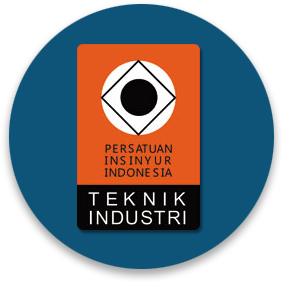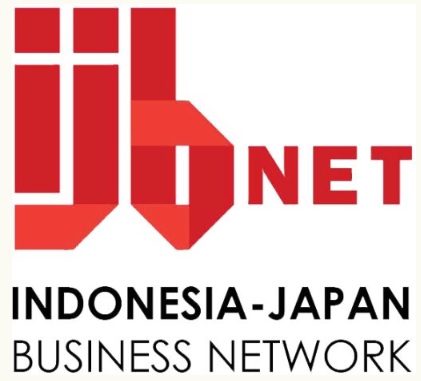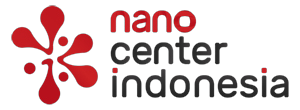Analisis Faktor K3 yang Bepengaruh Terhadap Produktivitas di Industri Otomotif
Abstract
The increasing development of industry and technology has the potential to cause a source of danger. In addition, work environment factors that do not meet Occupational Safety and Health (OHS) requirements, unsafe work processes, and increasingly complex work systems can pose a distinct threat to worker safety and health. This study aims to analyze the K3 factors that affect the decline in productivity. This study uses Focus Group Discussion to analyze problems and provide suggestions for improvement. The results of the analysis using Why-Why Analysis to find out the dominant causes show that OHS is considered a shackle. OHS equipment that is not provided according to potential hazards, OHS policy does not guarantee occupational safety and health, lack of firmness from companies in applying sanctions to violators of OHS regulations. This study concludes that by analyzing the factors regarding OHS Culture, OSH Training, and Employee Performance that influence productivity can be identified. With RCFA with Why-Why Analysis the company can make improvements to production declines.
Keywords
Full Text:
PDFReferences
Amirah, N. A., Amin, A., Muda, S., Talaat, W. I. W., & Rashid, N. M. N. N. M. (2017). Relationship Between Behavioral Aspects and Safety Culture in the Peninsular Malaysia Manufacturing Industry. World Applied Sciences Journal, 35(9), 1880–1884. https://doi.org/10.5829/idosi.wasj.2017.1880.1884
Bastuti, S. (2020). Analisis Risiko Kecelakaan Kerja Dengan Metode Failure Mode and Effect Analysis (Fmea) Dan Fault Tree Analysis (Fta) Untuk Menurunkan Tingkat Risiko Kecelakaan Kerja (Pt. Berkah Mirza Insani). Jurnal Ilmiah Dan Teknologi, 2(1), 48–52.
Erdhianto, Y. (2021). Occupational Health and Safety (K3) Analysis at the PG Kremboong Production Department using the Risk Priority Number and 5 Why’s Method. Jurnal IPTEK, 25(1), 19–26. https://doi.org/10.31284/j.iptek.2021.v25i1.1846
Haslindah, A., Idrus, I., Rosliadi, R., & Irsyad, A. (2019). Analisa Penerapan Progam Keselamatan Kerja Dalam Usaha Meningkatkan Produktivitas Kerja Dengan Pendekatan Fault Tree Analysis. ILTEK : Jurnal Teknologi, 13(02), 1971–1975. https://doi.org/10.47398/iltek.v13i02.371
Hidayatullah, R., & Muliatna, I. M. (2018). Study Failure Mode and Effects Analysis (Fmea) Sebagai Identifikasi Bahaya Dan Upaya Pencegahan Kecelakaan Kerja Di Pt. Pjb …. 06, 116–123.
Huda, U. F., Sukmawati, A., & Sumertajaya, I. M. (2016). Model Perilaku Keselamatan Kerja Karyawan pada Industri Berisiko Tinggi. Jurnal Manajemen Teknologi, 15(1), 51–66. https://doi.org/10.12695/jmt.2016.15.1.4
ILO. (2013). Keselamatan dan Kesehatan Kerja di Tempat Kerja Sarana untuk Produktivitas. In Clinics in Laboratory Medicine (Vol. 33, Issue 1, pp. 125–137). ILO. https://doi.org/10.1016/j.cll.2012.10.002
J., A., H., S., & W.I., E. (2017). Analisis Risiko Kecelakaan Kerja Pada Proyek Bangunan Gedung Dengan Metode Fmea. Jurnal Muara Sains, Teknologi, Kedokteran Dan Ilmu Kesehatan, 1(1), 115–123. https://doi.org/10.24912/jmstkik.v1i1.419
Kementerian Perindustrian. (2019). Laporan Kinerja Kementrian Perindustrian Tahun 2015-2019. Kementerian Perindustrian, 1–128.
Rahmanto, I., & Hamdy, M. I. (2022). Analisa Resiko Kecelakaan Kerja Karawang Menggunakan Metode Hazard and Operability (HAZOP) di PT PJB Services PLTU Tembilahan. Jurnal Teknologi Dan Manajemen Industri Terapan (JTMIT), 1(2), 53–60.
Sakti, Y. (2017). Analisis Penyebab Insiden Kerja Dengan Pendekatan Failure Mode And Effect Analysis (Fmea) Dan Penerapan Sistem K3 (Keselamatan Kesehatan Kerja) Di Area Pertambangan Batubara Pada “PT.X.” Jurnal Teknik Industri, 19(02), 15–24.
Septianto, A., & Wardhani, A. R. (2020). Penerapan Analisis Resiko Terhadap Kesehatan Dan Keselamatan Kerja(K3) Pada PT. X. Jurnal Aplikasi Dan Inovasi Ipteks Soliditas, 3(1), 6–11. https://doi.org/10.31328/js.v3i1.1385
Supardi, S., & Chandrarin, G. (2021). The Role of Safety Leadership and Safety Culture in improving Safety Performance. 4464(4), 55–62. https://doi.org/10.36349/easjebm.2021.v04i04.001
Suparno, S., & Susanto, A. S. (2021). Peningkatan Produktivitas Leaf Spring Jenis Minicup Tipe MMS 2230 dengan Mengurangi Pemborosan Proses Produksi Melalui Penerapan Metode Lean Manufacturing. Jurnal Rekayasa Sistem Industri, 10(1), 89–100. https://doi.org/10.26593/jrsi.v10i1.3813.89-100
DOI: http://dx.doi.org/10.22441/MBCIE.2023.023
Refbacks
- There are currently no refbacks.
Copyright (c) 2023 Proceeding Mercu Buana Conference on Industrial Engineering

This work is licensed under a Creative Commons Attribution-ShareAlike 4.0 International License.
Journal ISSN:
| e-ISSN | |
| 2988-4284 |
Tim Editorial Office
Proceeding Mercu Buana Conference on Industrial Engineering
Program Studi Magister Teknik Industri Universitas Mercu Buana
Jl. Raya Meruya Selatan No. 1 Kembangan Jakarta Barat
Email: [[email protected]]
Website: https://publikasi.mercubuana.ac.id/index.php/mbcie/
The Journal is Indexed and Journal List Title by:
in Collaboration with:








